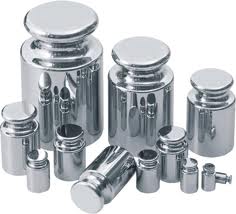Fields of Calibration - Definitions

TORQUE CALIBRATION
Torque calibration is the method of checking, correcting or adjusting, through comparison with a known standard, the turning force on an object. Our calibration scope as well as various examples of torque instruments can be found here.

PRESSURE CALIBRATION
Pressure calibration is the method of checking, correcting or adjusting, through comparison with a known standard, the ratio of force to the area over which that force is distributed. Our calibration scope as well as various examples of pressure instruments can be found here.

DIMENSIONAL CALIBRATION
Dimensional calibration is the method of checking, correcting or adjusting, through comparison with a known standard, the measurement of spatial extent, especially width, height and length. Our calibration scope as well as various examples of dimensional instruments can be found here.

TEMPERATURE CALIBRATION
Temperature calibration is the method of checking, correcting or adjusting, through comparison with a known standard, the numeric measurement of hot or cold. Our calibration scope as well as various examples of temperature instruments can be found here.

MASS CALIBRATION
Mass calibration is the method of checking, correcting or adjusting, though comparison with a known standard, the dimensionless quantity representing the amount of matter in a particle or object. Our calibration scope as well as various examples of mass instruments can be found here.

FLOW CALIBRATION
Flow calibration is the method of checking, correcting or adjusting, through comparison with a known standard, the quantification of bulk fluid movement. Our calibration scope as well as various examples of flow instruments can be found here.

ANALYTICAL CALIBRATION
Analytical calibration is the method of checking, correcting or adjusting, through comparison with a known standard, the analysis or composition of materials. Our calibration scope as well as various examples of analytical instruments can be found here.
